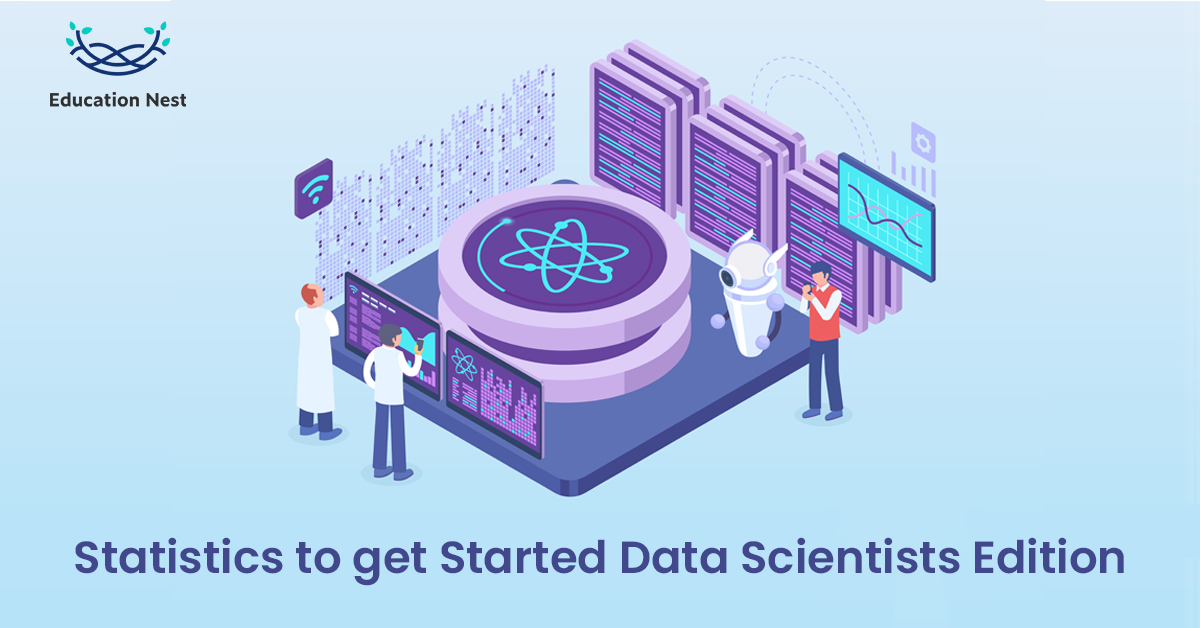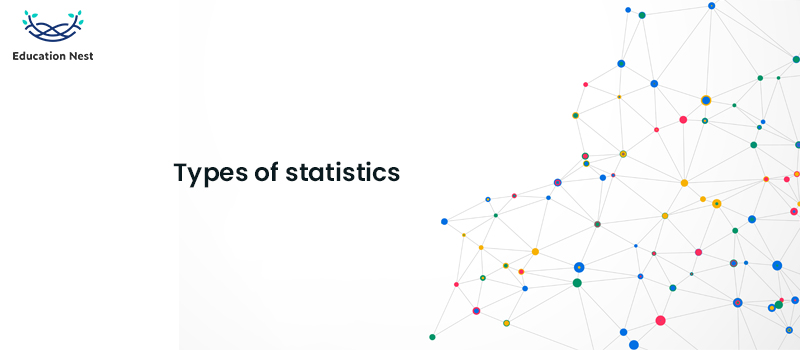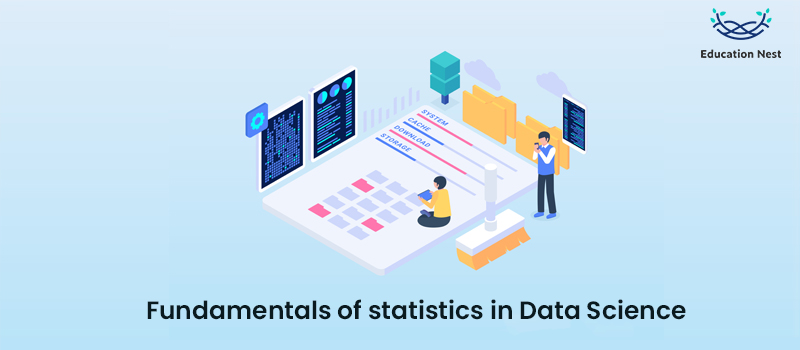
There is no denying the significance of statistics in data science and data analytics. Statistics offers techniques and tools to uncover the structure and provide more in-depth data insights.
Data scientists can use their critical thinking and creativity to solve business problems and create data-driven decisions by having a solid foundation in statistics.
What are statistics?
Data collection, organization, analysis, interpretation, and presentation are the main goals of statistics. Given the importance of data in contemporary technologies, statistics is helpful for machine learning.
Types of statistics

There are two types of statistics: inferential statistics and descriptive statistics.
Descriptive statistics: Descriptive statistics refer to numbers that characterise a specific data set or condense the given data set into something more understandable.
Descriptive statistics concentrate primarily on the fundamental elements of the data. It presents the information graphically.
Inferential statistics: Generalise a large dataset before using probability to conclude. It enables us to infer data parameters using sample data and a statistical model.
Inferential statistics employs a selection from the data set rather than making conclusions from the entire data set.
Fundamentals of statistics in Data Science

Mean Median Mode
Mean: The central value is the mean, often referred to as the arithmetic average.
Median: The middle value in an ordered set, known as the Median, exactly divides the set-in half. The Median has the benefit of being less subject to outliers than the mean.
We can infer that most of the items in our data follow the same trend if the mean and median are not too far apart. However, if the difference is significant, we can infer that the data contains a few outliers.
Mode: In a data set, the Mode is the value that appears the most frequently. When you need to comprehend clustering or the quantity of “hits,” Mode is most helpful.
Like the Median, Mode cannot be skewed to one side by a small number of large values, making it far more dependable. Because they are less likely to distort due to a few outliers large numbers, Median and Mode can also be excellent replacements for any null values in your data.
Standard Deviation
Another top-rated statistical tool or procedure is the Standard Deviation. It examines how far each data point deviates from the overall data set mean. It establishes how the data set’s data are distributed around the mean. Additionally, it can be used to determine whether or not the research findings can be generalized.
When the Standard Deviation is low, most data are within a few standard deviations of the mean.
When the Standard Deviation is high, the values are more evenly distributed.
Regression
Regression is a statistical technique utilised in many disciplines, including analysis, finance, and investment. Straight lines with slopes and curves are used to visually represent a regression to visually depict the relationship between two variables.
A dependent variable is connected to one or more independent (explanatory) variables by regression. Suppose there is a relationship between changes in one or more explanatory factors and changes in the dependent variable. In that case, it can be shown through a regression model.
From a statistical perspective, regression is a valuable technique that can also be applied to forecast the future using data from the past. Regression can be understood using both linear and non-linear models.
Linear Regression: Linear regression uses a straight line to show the relation between two variables.
Non-linear regression: Non-linear regression uses a curve to show the relationship between variables.
Correlation
As a measure of a relationship, the correlation considers both the strength and the direction of the linear relationship between two variables. When a correlation between the values of two target variables is found, it suggests a connection or pattern between them.
It is important to look for patterns when working with big amounts of data. In order to find a pattern in the data and establish whether the variables are highly connected, a correlation matrix is used.
Two random variables, X and Z, are correlated when their covariance, which is the product of their standard deviations, is divided by these two variables.
A variable’s correlation with itself is always 1, and correlation coefficients range from -1 to 1.
You cannot conclude that one variable changes the other if there is a correlation between the two. This association can be accidental or result from a third factor affecting both variables.
You Must Like: Skills to Succeed as a Business Analyst
Covariance
Covariance is used to minimize the dimensionality of huge data sets.
The covariance measures the combined variability of two random variables and describes how these two variables are related. It is described as the expected value of the product of the standard deviations of the two random variables.
Cov (X, Z) = E [ (X-E(X) ) (Z-E(Z) ) ]
The following statement, where E(X) and E(Z) denote the means of X and Z, can be used to characterise the covariance between two random variables, X and Z.
Besides the number 0, covariance can also have negative or positive values.
When covariance is positive, two random variables are more likely to change in the same direction.
If the value is negative, these variables will likely vary in the other way.
The number 0 indicates that they do not vary together.
Bayes theorem
The Bayes theorem is a significant probability law that introduces the idea of subjectivity. It estimates the likelihood of an event based on previously known circumstances that might be related to it.
The Bayes theory’s foundational idea of conditional probability calculates the likelihood that one event will occur given the occurrence of another event. Machine learning applications that involve categorisation tasks employ the Bayesian method of computing conditional probabilities.
The Naive Bayes Classification, a condensed form of the Bayes Theorem, is employed to speed up calculation and lower expenses. Conditional probabilities are essential for computing precise probabilities and predictions in machine learning.
Bayes’s Theorem states:
P(H | X) = [ P(X | H) * P(H) ] / P(X) where,
Pr (X|Y): the likelihood that something will happen given that something else has already happened or is true.
Pr (Y|X): the likelihood of an event occurring in the event that X has already happened or is true.
Pr (X) and Pr (Y) are the probabilities of observing events X and Y.
The scientific tool of statistical analysis, which recognises patterns and trends in the data and translates them into valuable information, enables large-scale data collection and analysis.
Simply put, statistical analysis is a technique for data analysis that helps to draw meaningful conclusions from unstructured and raw data.
The conclusions are reached via statistical analysis, which helps organisations make decisions and forecast the future based on historical trends.
It is the science of gathering, examining, and presenting data to spot trends and patterns.

